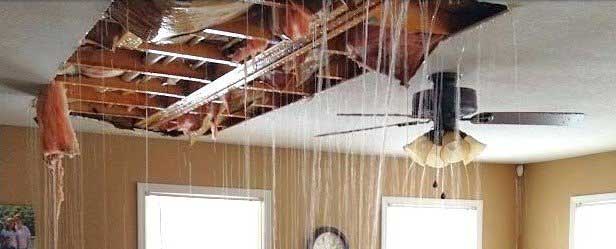The first thing to do when faced with damage from water is to contact your insurance company. You should document with pictures and video, and you should make sure to have flood insurance since the typical homeowner’s policy doesn’t cover water damage. Water damage restoration can be done by yourself or by an expert. Depending on the type and severity, you might want to contact a water and mold specialist since they have access to tools that can measure for mold and residual moisture.

Before doing any water damage restoration, shut the electric off at the breaker box and also unplug any electrical devices. Electric and water don’t mix well, so it’s a good idea to stand on a dry surface, and as a quick tip, don’t place newspaper on wet carpet as it will stain.
If items such as furniture are still dry, wrap the legs in aluminum foil to protect from contact with water. If possible, move the items to higher ground for better protection. For wet things like fabrics, you have to wash them first and then put them into the air circulation until dry.
Planning for unforeseen weather is difficult at best, and if faced with a flood from an overflowing river, for example, then all you can do is try to protect your property until the water subsides. Don’t assume anything when dealing with plumbing and water lines and water mains. Make it a routine to check for pipe leaks, roof leaks, sewer, and toilet backups. A small crack in a water pipe can put out 250 gallons of water in twenty hours.
Some disturbing facts to consider are that 93% of the water leaks, as mentioned above, can be prevented and caused $9.1 billion in damage in the years 2007 to 2009 and are the third most significant reason for water damage. Toilet leaks use up 22 gallons of water a day. Up to 40% of homeowners in the U.S. have had water damage. It is the second most filed insurance claim.
When dealing with the aftermath of flooding or leaks, remember the following. What kind of water is it? There are three types, rainwater, fresh water, and sewage. Be especially careful with sewage water as it may or may not have an odor and may even be clear like regular water. Still, it can be harmful if you have an open wound that will allow the water in which can lead to catastrophic health problems. But even if it’s freshwater, that can get contaminated and cause just as much chaos for you.
On the other hand, a leak in the roof or faulty gutters can cause just as much damage as a flood or toilet overflow. Don’t neglect basement walls or floors. A crack in a basement wall can have the same effect as turning on a faucet and leaving it unattended. Basement wall failure does happen, and when it does, you may have to have steel two by fours mounted in between the walls for support.
If you do have flooding, don’t think that the problem is gone just because the water is. Moisture can get into hidden areas such as below floorboards, crawlspaces, and walls and lead to mold. Mold is toxic, and it may or may not have an odor, but if it does, it can cause an annoying aroma, and it can aggravate allergies and asthma. Mold needs three things to grow, organic material like floors and walls, moisture, and oxygen. It means it doesn’t take much to ruin your day or your home once the mold forms. The best solution is most likely to call a water damage restoration expert who can help you solve the problem.